Fibrous woods such as cherry and sycamore/maples can be suitable for the pro as they can speed up work because they cut along the grain. Beginner spoon carvers should opt for less fibrous woods such as birch, alder, and lime/linden because they are more forgiving when carved.
More fibrous woods dig in as soon as you cut up the grain. This requires more skill to control. Ring porous or open-grained wood like oak and ash tends to pick up food stains and absorb liquids more readily. I’d advise beginners away from these woods as they are not the best woods for spoon carving.
But never say never. Your spoon carving journey should not be spread across a few “good” kinds of wood for spoon carving but rather an exploration of the possibilities. In this article, I have listed woods I have encountered while on my unique journey of spoon carving and wood culture.
best woods for spoon carving
All wood can be carved. It’s just a question of how easy or difficult it is to carve. Different wood species can vary enormously in character, color, and structure. Some are soft; others are hard. Some have even hardness throughout the wood; some have summer wood that is much harder than spring wood.
Here’s a list of the types I encounter the most, but it’s not exhaustive – if you find a piece of wood that you are tempted to take your knife to, don’t let the type of wood stop you!
Alder
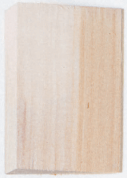
There are two kinds of alder – grey alder and common alder. Alder is easily recognizable as it’s the only broad-leaved tree with cones. Alder thrives close to the water and has high water resistance. The wood has a reddish tone and is light, soft, and relatively even-grained.
Alder is a classic crafting wood, which is very lovely to work with, both green and dry. Döderhultarn (a Swedish wood carver) carved his figures in alder, and he is said to have commented that ‘its dirty brown color is very well suited to represent farmers from Småland.’
Elm
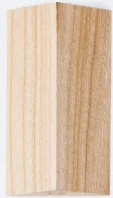
Elmwood is heavy, hard, robust, and challenging but can also be twisted and cross-grained. The spring wood is distinctively ring-porous, meaning that there are more and larger vessels in the springwood, making the color contrast between spring and summer wood distinct.
The heartwood has a red-brownish tone, whereas the sapwood is light in color. It isn’t easy to carve but has been used widely for art and utility objects because of the beautiful, lively wood. Unfortunately, many elm populations have died due to Dutch elm disease.
Ash
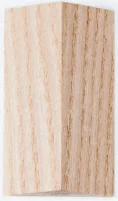
Ash wood is white to yellowish, but the heartwood can have heavy streaks of red, sometimes graduating towards pink. The spring wood is light in color and ring-porous. The summer wood has a slightly darker tone and is compact. The wood is hard, tough, elastic, and strong.
It is hard but unpleasant to carve as a carving material, but I prefer to do so when the wood is green. Ash has been widely used for tools and sports equipment due to its toughness and strength. Among other things, ax hafts (handles) are made from ash.
Aspen
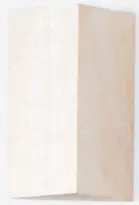
The wood of aspen is soft and light in color and weight. The heartwood and the sapwood have the same color. It is a very quickly carved wood, so it’s suitable for when you’re starting. On the other hand, getting a nice surface cannot be easy because it’s so soft and porous. But with sharp knives, that shouldn’t be a problem!
Birch
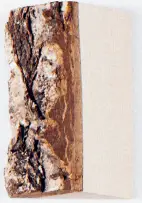
Birch is soft to medium-hard, homogeneous wood that is strong and durable. The heartwood and the sapwood often have the same white-yellow color, but sometimes it has a red-brown heart. It’s easy to split and carve with and has a beautiful finish making it the best wood for spoon carving for newbies.
There are many different birch species, the most common being downy birch, a straight, easy-to-work-with wood, and silver birch, which is more cross-grained. Because of the ease with which birch can be carved, it is the most popular wood for handicrafts.
Birch, Masur

Masur occurs when the tree’s growth rings grow at different speeds, causing ruptures to appear in the wood. In them, scar tissue is formed, creating dark streaks in the wood. Masur birch is solid and durable wood. Because it has such cross-grained growth rings, it hasn’t got any weak directions as straight lumber does. But the cross-grain also makes it difficult to carve as it’s very hard. It’s easier to handle with the knife when green, but it can become tricky when dry. Soaking dry Masur will help with the process.
Birch, spalted
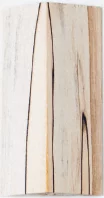
Spalted wood can be found in logs or branches left outside after falling. Spalting causes black streaks and color variations to appear in the wood, forming beautiful patterns. Spalted timber is more porous than healthy wood, but it’s OK to use to a certain extent. However, if the spalting has gone too far, the wood will become unusable – if this is the case, you’ll notice it quickly once you start working with it.
Beech
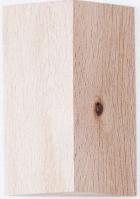
Wood from beech is heavy, complex, and homogeneous – a solid wood. The color is red-brown, and the heartwood and sapwood have the same tone. You can recognize it easily from the ‘freckles’ that appear throughout the wood. It’s challenging to carve, but the surfaces become great thanks to the consistent hardness.
Oak

Oak is heavy and stiff. The heartwood is brown, and the sapwood is light in color. Oak is the most tedious wood to carve, in my opinion. The summer wood is very hard, and the ring-porous spring wood is very porous, which will not only slow down the flow of carving but also make the objects weak from the brittle spring wood. However, you can create beautiful objects because oak wood has clear medullary rays, natural shimmering lines across the grain, and color variations that become prominent when carving.
Juniper

Juniper wood usually grows in the form of shrubs, so getting hold of chunkier pieces can be challenging. The wood is red-brown with thin yellow-white sapwood. Many believe this is the best wood for carving, but it cannot be easy to carve! Juniper wood grows slowly and has dense growth rings and reasonably hard, twisted wood with many smaller twigs. But it smells beautiful, and the growth rings can have incredible color variations, making the wood fantastic for green and dry carving.
Pine
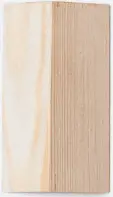
Pinewood has red-yellow, resin-rich heartwood, and yellow-white sapwood. Pine can be tricky to carve because the spring wood is softer and weaker in places than the summer wood, which is more con. Carved objects can therefore be fragile at more delicate, thinner points. However, more slowly grown pine is easier to work with as the wood is denser and less tender. Pine smells fantastic and ages very beautifully.
Laburnum
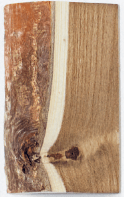
Grown as a shrub, this is a tough and heavy wood with golden-brown heartwood and white sapwood. Laburnum is a poisonous species, and dust and chips can bring on an allergic reaction, so you should avoid using laburnum for cooking and eating utensils. That said, it is wonderful with strong color contrasts and variations in the wood, so it isn’t easy to keep the knife away.
Hazel

Wood from hazel is tough, homogeneous, and relatively soft. The heartwood and sapwood have the same creamy-white color with a nutty tone (which might seem ironic), and the wood has clear medullary rays. It grows as a shrub, so it can be challenging to get hold of thicker dimensions, but older hazels can have fairly thick trunks. The wood gets a smoothness similar to velvet when you carve it. Fantastic! A favorite wood.
Cherry

Cherry trees come in wide different varieties. Sweet cherry, or wild cherry, grows wild and is, therefore, easier to get hold of. The wood is medium-hard and robust. It is yellow-red to brown-red at the heart and light yellow, sometimes graduating towards pink, in the sapwood. It can vary significantly in appearance and sometimes has streaks of olive green. It’s a wonderful and striking wood. Compared to other fruit trees, it grows pretty quickly, so the wood tends to be straight and easy to split—excellent wood for carving.
Lime
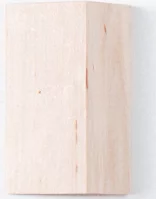
Lime is a soft and homogeneous type of wood that is light in color and weight. There aren’t any significant differences between spring wood and summer wood, especially regarding appearance or density. Lime is often used for sculpting just because of these qualities. It is an excellent wood to carve, but it can’t take too much strain.
Larch

Larch is similar to pine but has a darker yellow-red-colored heartwood. Apart from that, the wood is very similar to pine in its qualities and carving experience – in other words, it’s not optimal. But it can have wonderful color variations and a depth in the wood that surpasses pine.
Maple
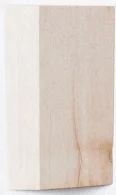
Maple is a beautiful silk-shimmering wood. It is light yellow-white, with the heartwood and sapwood in the same tone, and the wood has prominent medullary rays. Sometimes dark streaks can appear at the center of the heartwood. It can be difficult to split, and the wood is hard, but the hardness is the same for summer wood and spring wood, so it’s adorable to carve.
Lilac
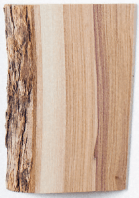
The sapwood of lilac is yellow-white or red-white, and the heartwood is more light brown, often with streaks of strong violet tones. It grows as a shrub and can have a very twisted and split wood. Lilac is the most complicated wood that grows in my home country, Sweden. Due to the hardness and the cross-grain, I recommend not carving objects that are too large using lilac. Thanks to the hardness, the facets made by the knife will get an almost glassy surface. It becomes wonderful and almost magical with the violet streaks.
Pear

Pear and other fruit trees, such as apple and plum, have similar qualities and appearances. The heartwood is often red-brown with a pink tone, and the sapwood is light in color. They often have a ‘false’ heartwood with darker streaks outside the actual heartwood so that the wood can be extremely striking. The wood is strong and hard but fairly twisted and difficult to split, making it quite difficult to carve. The same advice applies here for lilac – don’t attempt to carve objects that are too large.
Wet VS Dry Wood
Using wet or dry wood is another major consideration in material selection for spoon carving. Wet (green) wood refers to wood that has been freshly cut from a tree, or that has a very high moisture content.
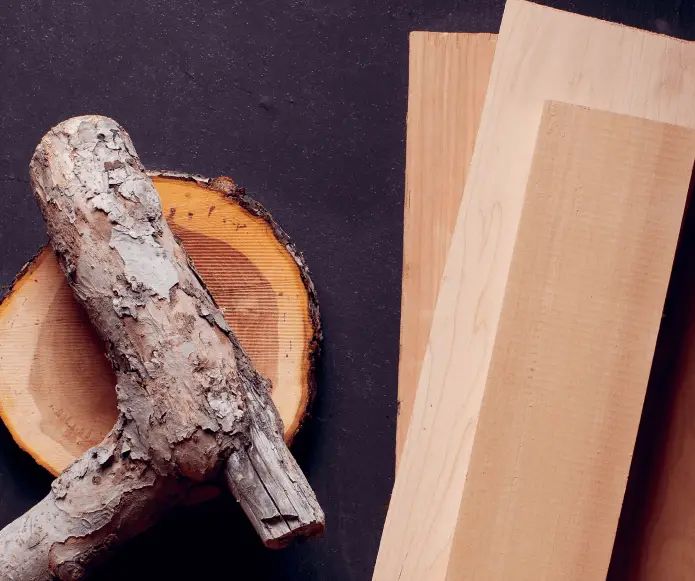
In understanding the difference, it may be helpful to consider that the purpose of most wood inside a tree is to help move water up from the ground into the leaves. On a cellular level, wood is a lot like a sponge. In this process, saturation is the normal living state of the wood.
Greenwood is dimensionally unstable because its volume reflects the amount of water trapped inside and the wood fibers themselves. Greenwood is full and can be quite heavy; some pieces may be able to hold many gallons of water. As soon as a tree is cut, the cut-off portion begins to lose moisture and thus shrinks and changes shape as the inevitable drying process begins.
Wood will continue to lose moisture until the internal content reaches equilibrium with its environment, which is considered to have been air-dried. Sometimes the drying process is expedited, such as in a kiln, to reduce moisture content even further. Most commercially available lumber has been dried in this manner.
Dry wood has already done most of its shrinking and settling. What is the ideal moisture content for the would-be carver? Green wood is much easier to work with using basic tools, such as a knife and gouge, than dry wood. Try using a hook knife on a freshly split piece of green sugar maple and then on one that has been drying for a few years.
The difference will be immediately evident. Entire traditions of woodcarving and implement making rely on green material to start. The retained water lubricates tools as they cut, reducing friction. Wet wood is still supple and easy to slice, split, or bend.
Many blade-type tools were made for this type of wet work. Some carving techniques and tools are downright impossible and frustrating to use with dry material. Green wood is much easier to work with using bladed tools, but (and this is the distinction) it must still go through dimensional changes and its curing or drying process after it has been shaped, which takes time.
Dry wood is much harder than green wood. With the heavy moisture gone, the wood fibers and connective lignin solidify. Although the result is a lighter material, dry wood is much harder than its saturated equivalent. Blades will still cut dry material—it just takes much more effort—whereas wet wood will yield large slicing curls right off the knife. Dry wood gives up only smaller chips.
Wrapping up
So more than just relative moisture content, the discussion of wet versus dry material leads to differences in the carving process and tool selection. A wet wood project may take the form of a tree branch that is worked with an ax and knives, while a dry wooden spoon may be made from a piece of ebony that you have been saving for years, which will be sanded to a high polish. Wet wood can be worked on before curing; dry wood is worked on after fixing.

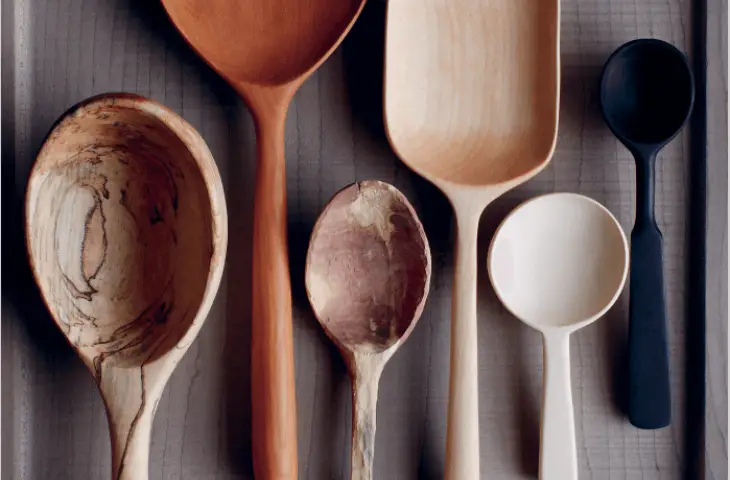
Great info. Have been making chains, and will try the spoons.